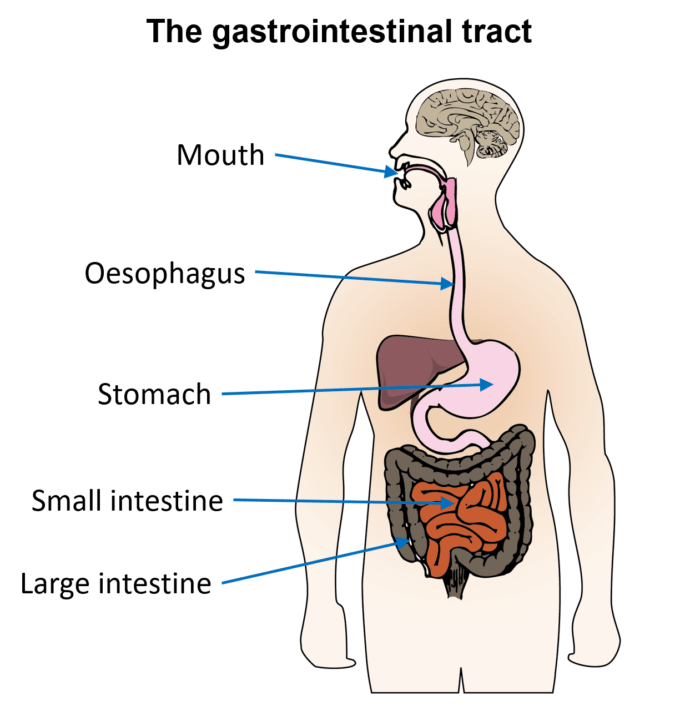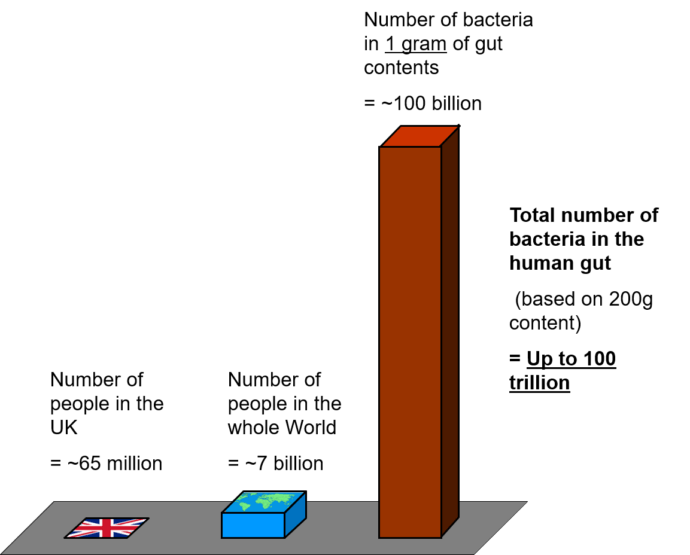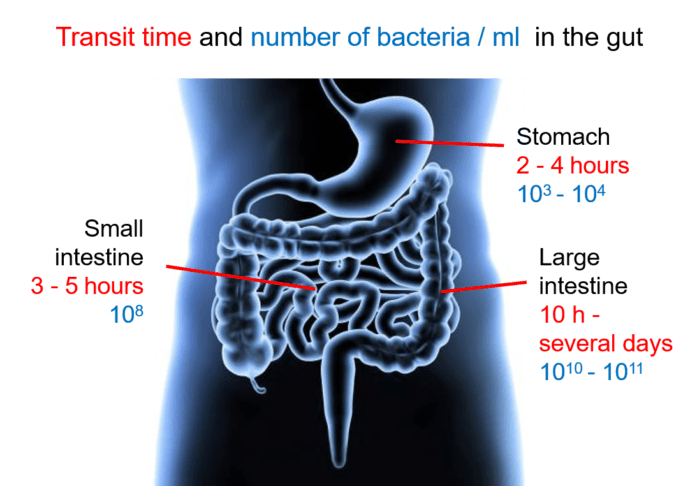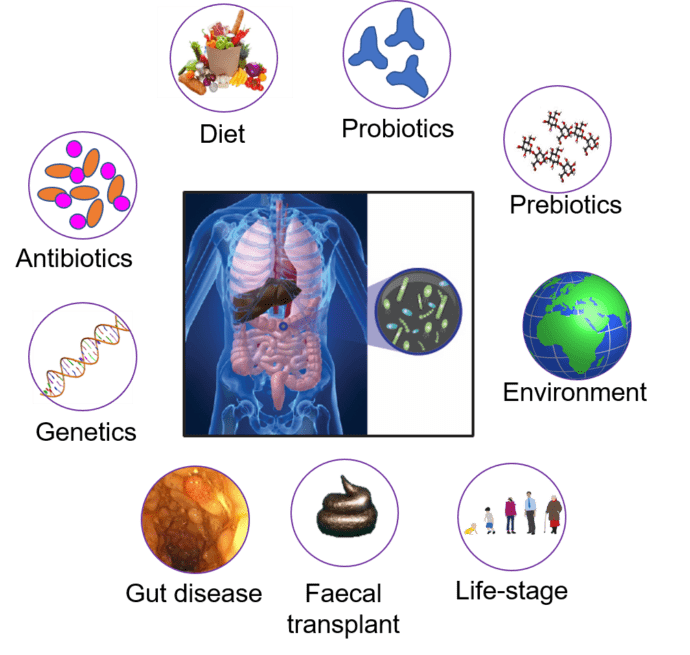Your gut
The gastrointestinal tract, or alimentary canal is the body’s digestive system. It extends from the mouth to the rectum and includes the oesophagus, stomach, small intestine and large intestine (also called the colon). The main purpose of the gastrointestinal tract is digestion of food and extraction of energy providing compounds and other nutrients such as vitamins that are necessary to sustain life. Here, we use the word “gut” to refer to the stomach and intestines although sometimes the word “gut” is used to describe the whole gastrointestinal tract.


Digestion begins in the mouth, where food is taken in to the body, or ingested. Once food is chewed and mixed with saliva, it forms a ball. Proteins called enzymes are present the entire length of the gastrointestinal tract. Enzymes break the food down into substances that are needed by the body.
Physical processes that help digestion include the chewing of food (mastication) to break it up into smaller pieces and peristalsis which is the involuntary contraction of intestinal muscles that moves the food through the intestine.
The length of time that material takes to pass through each different part of the gastrointestinal tract is known as the transit time.
Microbes are a fundamental part of the gut and perform such an important role that humans and animals could not survive without them. These microbes are also known as your gut microbiota.
Gut microbes
There are more microbes than human cells in the body. The human gut contains bacteria, archaea, viruses and fungi with bacteria being the most numerous. Everyone’s microbiota is different – similar to a unique fingerprint. Ruminant animals (like cows and sheep) contain bacteria, archaea, viruses, fungi, and protozoa.
The vast majority of bacteria that live in the gut are beneficial for health with different bacteria performing different functions. A major function is production of metabolites that are important for our health. Bacteria within your gut act together in a population/ consortium, communicating with each other and you (the host). A diverse microbiota is important to maintain health and what we eat affects which bacteria are there, and what they do.


The number of bacteria present increases as you descend the gut. The conditions in each organ are very different and as a result, so are the types of bacteria present. Acid tolerant bacteria live in the stomach and bacteria that cannot grow in the presence of oxygen (known as anaerobes) prefer conditions in the large intestine. The large intestine contains the highest numbers of bacteria.
Transit time is also important as different bacterial populations have different growth rates so this can influence which bacteria are present. It also determines the length of time that the human intestinal cells are exposed to toxins which are either consumed with food or produced by bacteria.
Many different factors affect the composition and activity of bacteria living in the large intestine. We can control some of them but not others. For example we cannot change where we live, or our age or our genetics (our DNA). We can however change our diet and the amount of antibiotics or probiotics we consume. Studies have shown that if you make big changes to your diet like really limiting the amount of carbohydrates you eat, you can change the most numerous types of bacteria present in your large intestine within a week. This change causes lots of ‘good bacteria’ to disappear and populations of other bacteria increase.

Read also
Gut health
Gut microbes and your health
Gut microbes have a number of important roles in keeping us healthy. A healthy gut really does make a healthy person.
